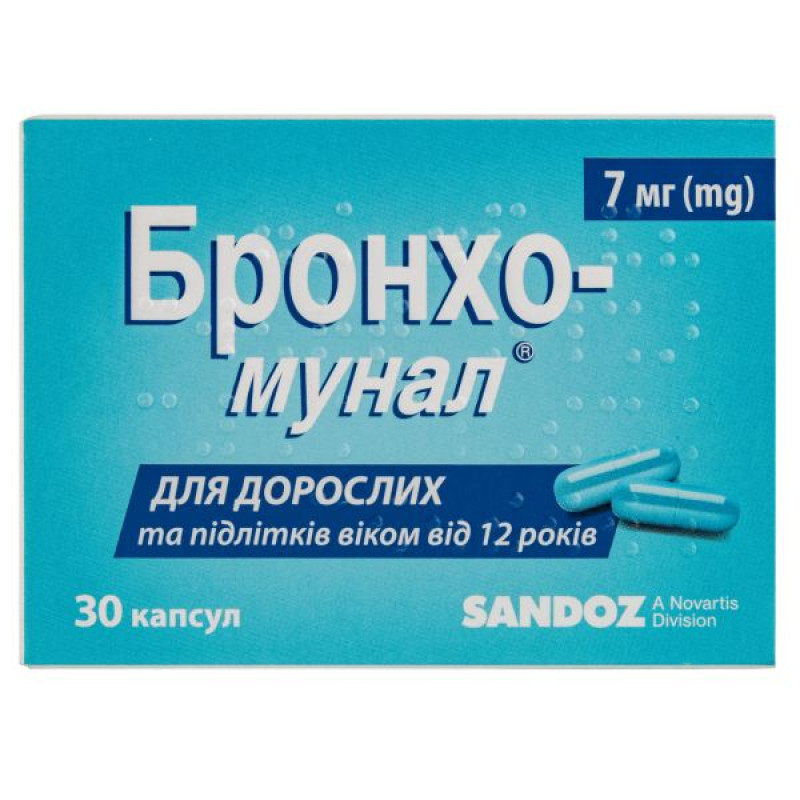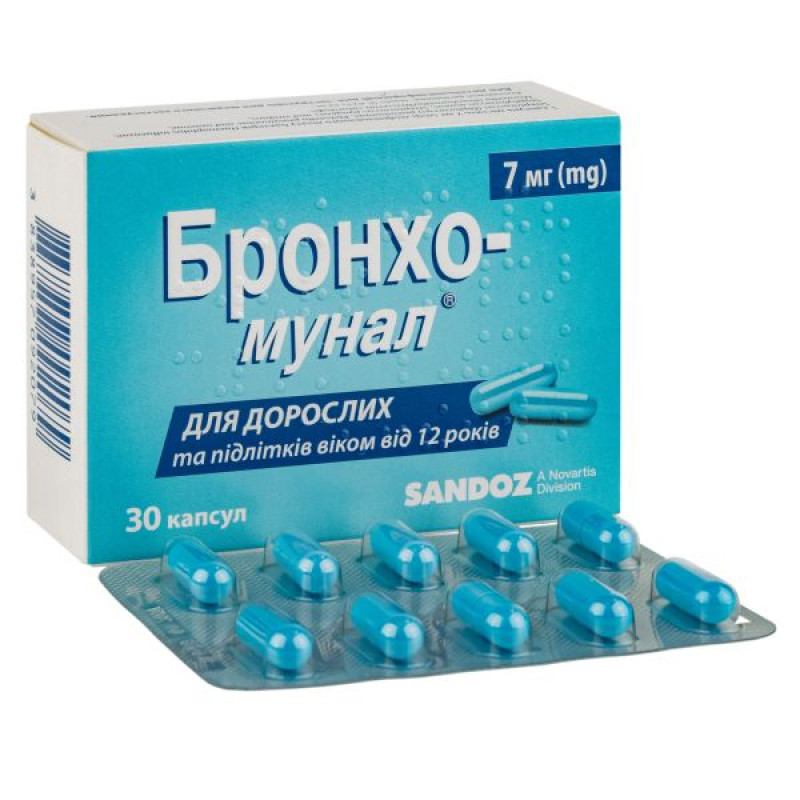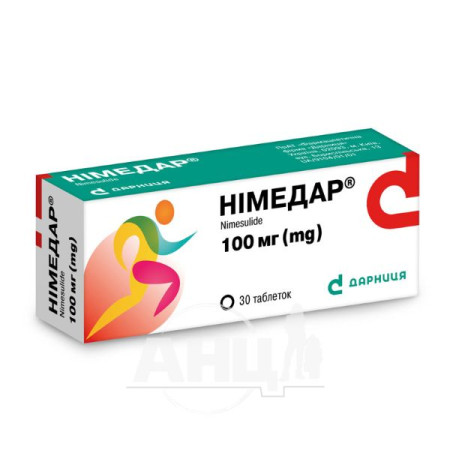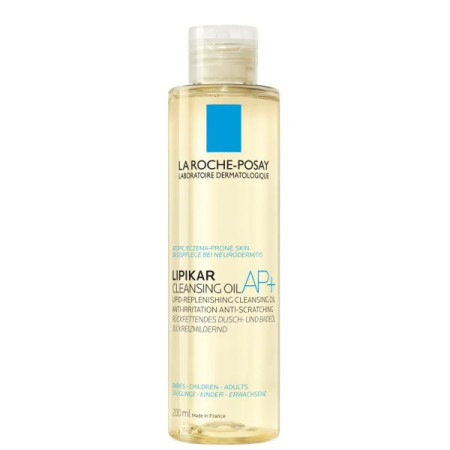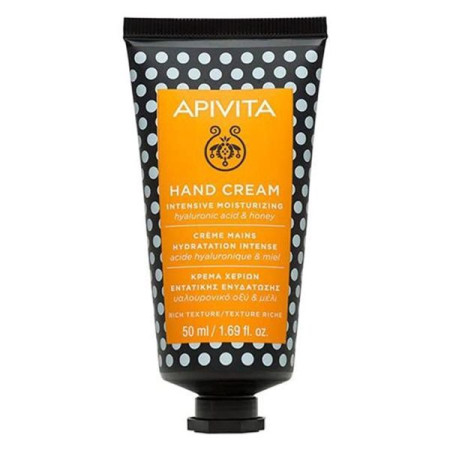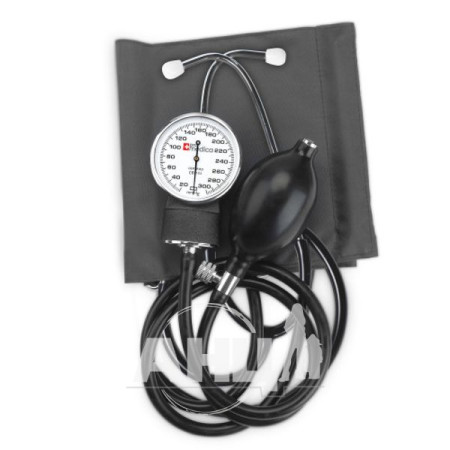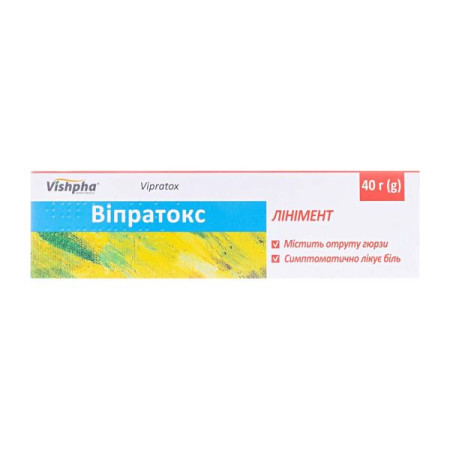Broncho-munal hard capsules 7 mg No. 30
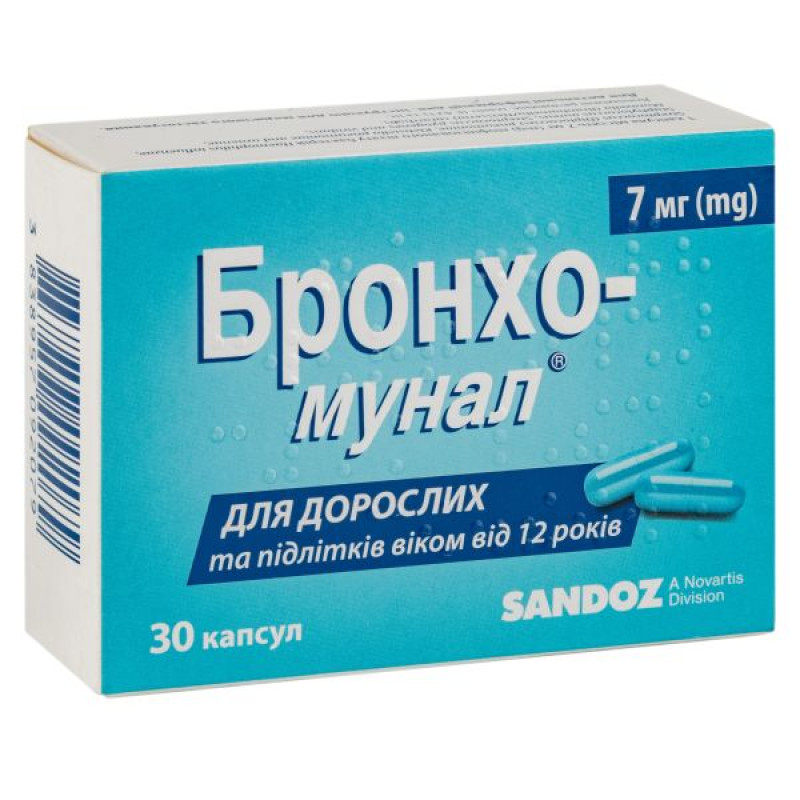
Instructions for Broncho-munal hard capsules 7 mg No. 30
Composition
active ingredients: 1 capsule contains 7 mg of lyophilized lysate of bacteria Haemophilus influenzae, Streptococcus (Diplococcus) pneumoniae, Klebsiella pneumoniae and ozaenae, Staphylococcus aureus, Streptococcus pyogenes and viridans, Moraxella (Branhamella/Neisseria) catarrhalis;
excipients: propyl gallate, sodium glutamate, mannitol (E 421), magnesium stearate, pregelatinized starch;
shell: indigotine (E 132), titanium dioxide (E 171), gelatin.
Dosage form
The capsules are hard.
Main physicochemical properties: opaque capsule No. 3, blue in color, containing a slightly beige powder.
Pharmacotherapeutic group
Other agents acting on the respiratory system. ATX code R07AX.
Pharmacological properties
Pharmacodynamics
The drug contains a lyophilized lysate of bacteria that most often cause respiratory tract infections, including Streptococcus pneumoniae, Haemophilus influenzae, Klebsiella pneumoniae, Klebsiella ozaenae, Staphylococcus aureus, Streptococcus viridans, Streptococcus pyogenes, Moraxella catarrhalis.
The drug stimulates the body's natural defenses against respiratory tract infections, reducing the frequency, duration, and severity of respiratory tract infections, and also reduces the need for antibiotics.
The drug activates the cellular and humoral immune response of the respiratory tract mucosa and other immunocompetent structures of the body. It also stimulates the nonspecific immune response of the body. In preclinical and clinical studies, the following effects of the drug on the body's defense mechanisms have been demonstrated:
– stimulates alveolar macrophages, which secrete cytokines that protect the body from infections;
– increases the number of CD4 T-lymphocyte populations;
– activates peripheral mononuclear cells that perform a protective function;
– increases the concentration of secretory IgA on the mucous membranes of the respiratory tract and digestive tract;
– stimulates the formation of protective adhesive molecules;
– reduces the content of IgE in blood plasma, which can inhibit the development of hypersensitivity reactions.
Pharmacokinetics
After oral administration of the drug, the bacterial lysate accumulates in Peyer's patches of the digestive tract mucosa.
Peyer's patch cells absorb antigen and present it to subepithelial lymphoid cells, thus inducing a humoral immune response that leads to increased production of IgA in the mucosa and prevents the penetration of microorganisms.
Antigens also stimulate lymphoid cells responsible for cellular defense, which then migrate through the regional lymph nodes into the thoracic duct, and then into the bloodstream.
With the bloodstream, they migrate to the mucous membrane of the digestive tract, respiratory tract, and mucous membranes of other organs, where they perform a protective function, increasing the ability of immune defense.
Indication
Immunotherapy. Prevention of recurrent respiratory tract infections and severe infectious exacerbations of chronic bronchitis. Concomitant agent in the treatment of acute respiratory infections.
Contraindication
Hypersensitivity to the active substance or any excipient included in the preparation.
Interaction with other medicinal products and other types of interactions
The interaction of the drug with other medications is currently unknown.
Application features
The drug may cause hypersensitivity reactions. In case of allergic reactions or signs of intolerance to the drug, treatment should be discontinued immediately.
The drug can be started no earlier than 4 weeks after vaccination with a live vaccine.
The excipient mannitol may have a mild laxative effect.
The product contains less than 1 mmol (23 mg)/dose of sodium in the form of monosodium glutamate, i.e. practically sodium-free.
Use during pregnancy or breastfeeding
There are no clinical data on the use of the drug in pregnant women. Animal experiments did not indicate any direct or indirect toxicity with respect to pregnancy, embryonal/fetal development or postnatal development. No studies have been conducted on breastfeeding and no data are available. The drug should be used with caution during pregnancy and breastfeeding.
Ability to influence reaction speed when driving vehicles or other mechanisms
Does not affect the ability to drive a car or use mechanisms.
Method of administration and doses
Adults and adolescents aged 12 years and over
Preventive therapy/complex therapy: 1 capsule per day on an empty stomach for 10 consecutive days per month, for 3 consecutive months.
Treatment of exacerbations: 1 capsule per day on an empty stomach, until symptoms disappear (minimum course – 10 days). In case of concomitant administration with antibiotics, the drug is recommended to be used from the very beginning of treatment.
If the patient forgets to take the drug, it should be taken the next morning.
Children
This dosage can be used in children over 12 years of age.
Overdose
No clear clinical symptoms of drug overdose were observed. No cases of overdose have been reported. In case of overdose, consult a doctor.
Adverse reactions
Reported adverse reactions are classified below according to MedDRA system organ class and frequency: very common (≥1/10), common (≥1/100 to <1/10), uncommon (≥1/1,000 to <1/100), rare (≥1/10,000 to <1/1,000), very rare (<1/10,000), including isolated reports, frequency unknown (cannot be estimated from the available data).
Immune system disorders: uncommon: hypersensitivity reactions (erythematous rash, generalized skin rash, erythema, edema, eyelid edema, facial edema, peripheral edema, swelling, facial swelling, pruritus, generalized pruritus, dyspnea).
From the nervous system: often - headache.
Respiratory, thoracic and mediastinal disorders: often - cough.
From the gastrointestinal tract: often - diarrhea, abdominal pain; infrequently - nausea, vomiting.
Skin and subcutaneous tissue disorders: common: rash; uncommon: urticaria; frequency unknown: angioedema.
General disorders and administration site conditions: uncommon - fatigue; rare - fever.
In case of persistent gastrointestinal or respiratory disorders, treatment should be discontinued. In case of skin reactions, treatment should also be interrupted, as these manifestations may be allergic in nature.
Expiration date
5 years.
Storage conditions
Store at a temperature not exceeding 25 °C in the original packaging to protect from moisture.
Keep out of reach of children.
Packaging
10 capsules in a blister, 1 (10 × 1) or 3 (10 × 3) blisters in a cardboard box.
Vacation category
According to the recipe.
Producer
Lek Pharmaceuticals dd, Slovenia (responsible for the release of the series).
Location of the manufacturer and its business address
Verovskova 57, 1526 Ljubljana, Slovenia.
There are no reviews for this product.
There are no reviews for this product, be the first to leave your review.
No questions about this product, be the first and ask your question.




